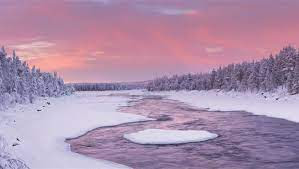AncientHumans

As ancient humans ventured into new environments, their adaptability was key to survival. In Africa, where Homo sapiens originated, early humans thrived by developing hunting and gathering skills suited to a variety of landscapes. They became skilled toolmakers, creating increasingly specialized tools from stone, bone, and wood to hunt, prepare food, and protect themselves. These tools marked the beginning of a technological journey that would span millennia and ultimately shape the future of humankind.
As Homo sapiens expanded into Europe, Asia, and beyond, they encountered other hominins, including Neanderthals and Denisovans. Interactions with these groups were complex, ranging from competition for resources to cooperation and even interbreeding, which left traces in the genetic makeup of modern humans. Neanderthals, for instance, exhibited sophisticated behaviors such as making tools, building shelters, and creating symbolic art, challenging the once simplistic view of their intelligence. These interactions enriched human diversity and contributed to the adaptive advantages that have allowed humans to flourish across the globe.
Around 40,000 years ago, a significant leap in creativity and cultural expression occurred, often referred to as the Upper Paleolithic Revolution. During this period, ancient humans created intricate cave paintings, carvings, and musical instruments, revealing an advanced understanding of the world and a capacity for abstract thought. Sites like the Lascaux and Chauvet caves in France showcase vivid depictions of animals and human life, suggesting that early humans not only survived but also found meaning, spirituality, and connection through art. Burial practices from this time also indicate an awareness of mortality and possibly a belief in an afterlife, underscoring the cultural depth of ancient humans.
The transition to agriculture around 10,000 years ago marked another turning point. Settling into communities, ancient humans cultivated crops and domesticated animals, which supported larger populations and led to the development of complex societies. This shift from nomadic to settled life transformed human health, diet, and social organization, laying the foundation for cities, trade networks, and written language. The rise of ancient civilizations, from Mesopotamia and Egypt to the Indus Valley and China, showcased remarkable advancements in architecture, mathematics, astronomy, and governance, all stemming from the ingenuity of our ancient ancestors.
The legacy of ancient humans is evident in our own abilities to adapt, innovate, and build connections across diverse cultures. Their discoveries, resilience, and creativity continue to shape modern humanity, reminding us of the deep roots of our shared journey and the enduring strength of the human spirit.
International Research Excellence and Best Paper Awards
Visit: https://bestpaperawards.com/
#PrehistoricLife
#EarlyHumans
#AncientCivilizations
#StoneAge
#Paleolithic
#Neolithic
#BronzeAge
#IronAge
#Hominins
#EarlyHominids
#AncientCultures
#HumanPrehistory
#FossilFinds
#AnthropologyDiscoveries
#AncientArtifacts
#Archaeology
#CaveArt
#EvolutionOfHumans
#HunterGatherers
#AncientDNA
#LostWorlds
#PrehistoricTools
Twitter : twitter.com/bestpaperaward
Pinterest : in.pinterest.com/bestpaperaward
Linkedin : www.linkedin.com/in/esha-gupta-18b2b4245
Instagram: www.instagram.com/eshagupta__2022/



Comments
Post a Comment